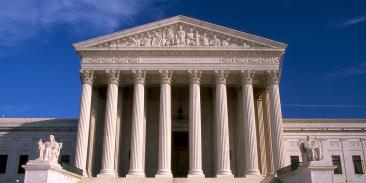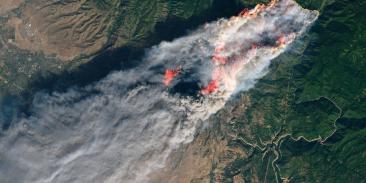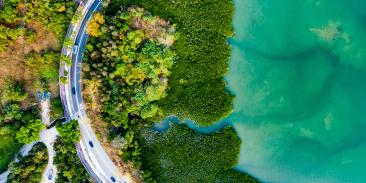Red River In The Red, Environmental Defense Study Shows
The author of the Environmental Defense report is Dr. Robert Stearns, an economist at the University of Maryland and formerly a top official with the Army Corps. His report also finds that the river carried less than 1/1000 of all commerce on the Inland Waterway Navigation System in 1996 but consumes 2% of all operation and maintenance funds and in recent years nearly 7% of all construction funds. His analysis also finds that the river fails efficiency measures proposed by the Army Corps of Engineers itself for deciding whether to maintain barging on a river.
The analysis cuts through official statistics published by the Army Corps of Engineers for the Red River waterway to show the limited commercial traffic that actually moves on the new, $2 billion project. The report shows that most of the commerce reported by the Army Corps uses only the lowest 35 miles of the river on the way to the Black/Oachita River, a section navigable before the Red River project. Most of the remaining commerce is sand and gravel, much of which is used to construct the Red River waterway itself.
“The story of the Red River is important,”” said Dr. Stearns, “because it is the most recent expensive new waterway and suggests the limited benefits of expensive barging projects on similar smaller rivers today.” The Army Corps of Engineers is studying whether to spend hundreds of millions more dollars to expand the Red River waterway to Index, Arkansas, or to expand navigation on the White River in Arkansas, a project biologists have said could devastate hundreds of thousands of acres of wildlife refuges.
This report comes at a time when recent disclosures have suggested deliberate efforts by top officials of the Army Corps of Engineers to distort its economic analysis to justify a $1 billion project to expand barging on the Upper Mississippi River.
“Taxpayers pay the vast majority of the costs of constructing and maintaining barge waterways,” said Environmental Defense attorney Tim Searchinger. “Since they don’t pay anything more for a new waterway, special interests have an incentive to push for expensive measures that benefit them regardless of the true benefits to taxpayers. Because these projects cause significant harm to fish and wildlife, they certainly should not be built when they do not even make sense economically.”
With more than 3 million members, Environmental Defense Fund creates transformational solutions to the most serious environmental problems. To do so, EDF links science, economics, law, and innovative private-sector partnerships to turn solutions into action. edf.org
Latest press releases
-
Cost of Trump Administration’s Mandates to Keep Michigan Coal Plant Open Balloons to $80 Million
October 31, 2025 -
EDF Strengthens Role in Ocean-Climate Governance with New Consultative Status at the IMO’s London Convention and Protocol
October 31, 2025 -
New analysis finds Indigenous lands and protected areas are key in slowing deforestation
October 28, 2025 -
New Poll: Republicans, Democrats and Independents Strongly Oppose Weakening Chemical Safety Law
October 27, 2025 -
Court Rules New York Must Implement State Climate Law and Deliver Swift Action
October 24, 2025 -
EDF Goes to Court to Help Defend California Climate Risk Reporting Laws That Protect People from Financial Damage
October 24, 2025










